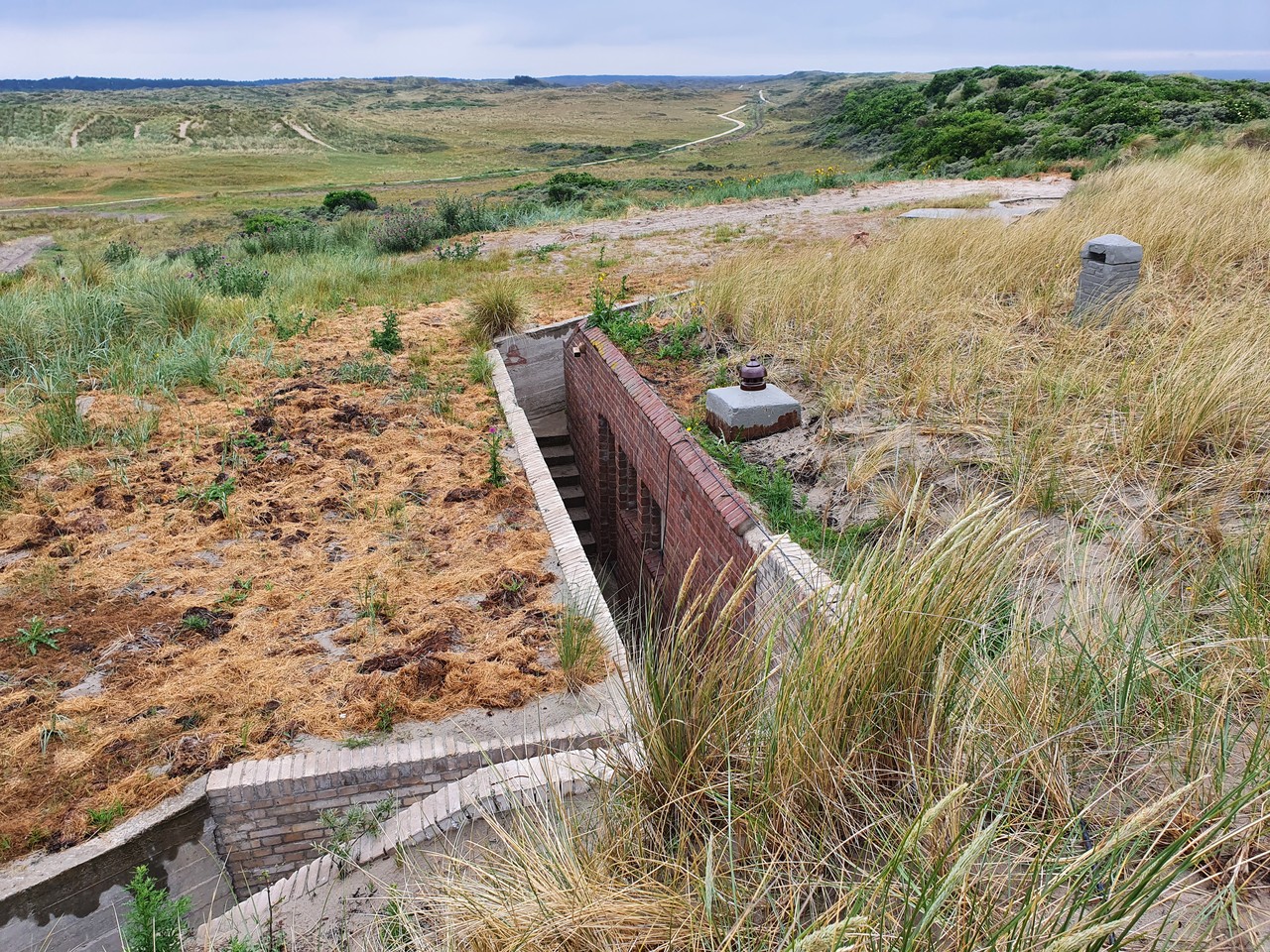Sperrgebiet and fortified positions
The island was declared a Sperrgebiet: only residents were allowed to stay, and visitors required a special Ausweis. As the war progressed, the German presence on Vlieland grew steadily. Because there were initially very few accommodations, German troops were partly billeted with island residents. In 1942, construction began on the island’s defensive line: positions such as Widerstandsnest 12H, 13H and 14H appeared in the dunes, equipped with anti-tank guns, artillery, radar, searchlights and fire-control equipment.
Air war over the North Sea
Although no ground fighting took place on Vlieland, the island was still on the front line. North of the Wadden Islands and over the North Sea, German anti-aircraft guns regularly fired at passing Allied aircraft, and German convoys were attacked by the Royal Navy and Coastal Command. For the roughly 650 inhabitants of Vlieland, these were difficult years. The island became heavily fortified, and the occupying force eventually grew larger in number than the local population. Freedom of movement was restricted: aside from the village, the harbour road and a small section of the beach, residents could enter very little without permission.
Employment and liberation
Because of the construction activities — bunkers, barbed-wire obstacles, minefields — many islanders had work. As a result, almost no one was sent by the Germans to the Arbeitseinsatz in Germany. The liberation of Vlieland came relatively late: only on 31 May 1945 did the occupation officially end. After the Germans had left, the island remained behind as a landscape filled with bunkers and defensive structures — silent witnesses to a turbulent time.
